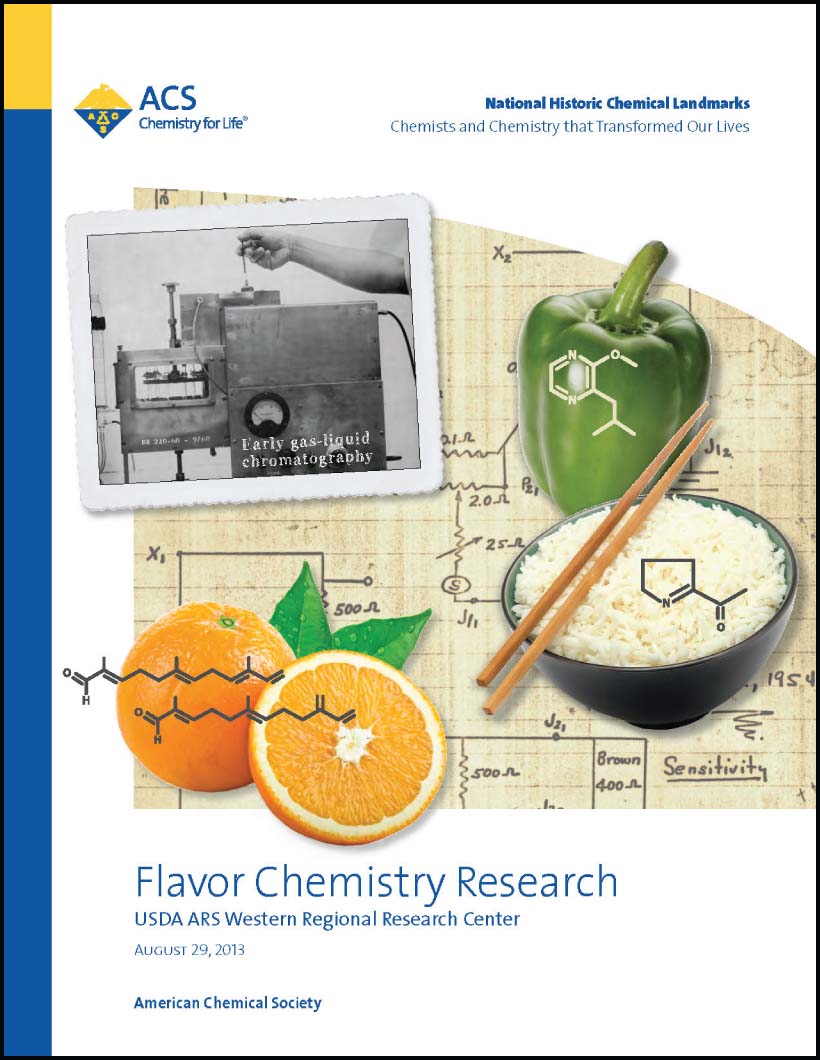Flavor Chemistry Research at the USDA Western Regional Research Center
Designated August 29, 2013, at the U.S. Department of Agriculture, Agricultural Research Service, Western Regional Research Center in Albany, California.
Flavor—encompassing both aroma and taste—provides the defining characteristic of how we experience food. Flavor has long been an enigma to scientists: Aristotle described two categories of taste, sweet and bitter. Today we recognize five basic tastes in food: sweetness, saltiness, sourness, bitterness and umami (savory). But what are the scientific components of flavor, and how can flavor be studied, quantified and replicated?
Contents
- Chemistry of Flavor
- Flavor Research at the WRRC
- Gas Chromatography in Flavor Analysis
- Analytical Techniques from the WRRC
- Static Headspace Analysis
- Combined Temperature Programmed Capillary GC-MS
- Odor Thresholds
- Impact of WRRC Flavor Chemistry Research
- Further Reading
- Landmark Designation and Acknowledgments
- Cite this Page
Chemistry of Flavor
Flavor is caused by receptors in the mouth and nose detecting chemicals found within food. These receptors respond by producing signals that are interpreted by the brain as sensations of taste and aroma. Certain taste and aroma combinations are characteristic of particular foods.
For example, a green apple tastes the way it does because the unique combination of chemicals found naturally within it are perceived by our mouths, noses and brains as the distinct blend of sweet and sour tastes and volatile aromas characteristic to the fruit. Identifying this chemical profile allows food producers to retain flavor in preserved green apples and, through synthesis of these flavor compounds, makes possible the production of candy, soda and other products using artificial green apple flavor.
The chemicals that produce flavors are notoriously difficult to study because a single natural flavor may contain hundreds or even thousands of component substances, and some of these substances are present in minute quantities. For example, one of the nine key aroma compounds found in pineapple is so potent that human subjects can detect it at only 6 parts per trillion—the equivalent of a few grains of sugar in an Olympic-size swimming pool. Understanding the components of flavor has become more important than ever with the modernization of food systems and the increased reliance on processed foods.
The perfume of a rose, the tang of an ocean breeze, the aroma of a sizzling steak—tastes and smells, two of our senses by which we characterize the world around us. And yet, we can not adequately express, define, or explain our taste and smell sensations. We can record the sounds we hear, we can photograph the sights we see, but we cannot store and retrieve the flavor of a food or the scent of a flower except in and from our mind.”
— Irwin Hornstein and Roy Teranishi, The Chemistry of Flavor, a C&EN feature, 1967
Flavor Research at the WRRC
The Western Regional Research Center (WRRC), originally the Western Regional Research Laboratory, was established as part of the U.S. Department of Agriculture through the Agricultural Adjustment Act of 1938. The act established laboratories in four major farm regions of the U.S. to “conduct researches into and to develop new scientific, chemical, and technical uses” for farm commodities.
With its focus on food crops and close proximity to California’s orchards and fields, the WRRC was enlisted to conduct research that would extend the availability of fruits and vegetables beyond natural harvest seasons. When the U.S. became involved in World War II, the WRRC quickly turned towards the development of new and improved preservation processes to keep U.S. troops fed and to better utilize the country’s agricultural products during times of tight supply.
The science and practice of dehydration, freezing and other treatments were rapidly advancing at this time. Research in the WRRC’s fruit and vegetable laboratories initially focused on food stability and the quality of dehydrated and frozen foods. After the end of World War II, WRRC scientists began the long process of investigating flavor compounds, and in doing so they developed numerous techniques that improved the capabilities of flavor analysis.
The achievements of flavor researchers at the WRRC from the 1940s onward demonstrated, for the first time, an understanding of the chemical essence of flavor.
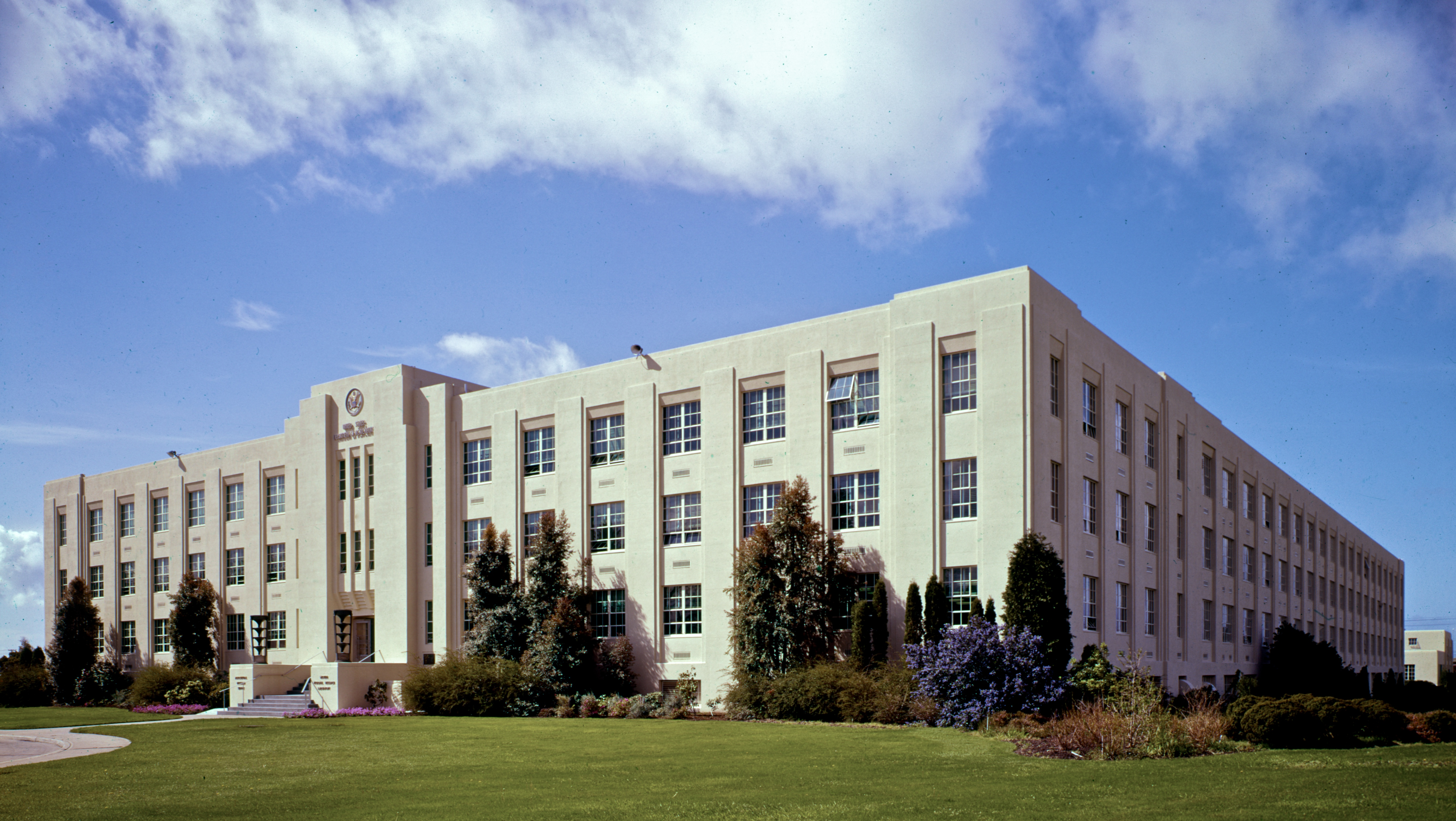
Frozen Foods Research
The USDA ARS Western Regional Research Center was recognized in 2002 as a National Historic Chemical Landmark for the development of Time-Temperature Tolerance studies. This research made possible the production of stable, safe and high quality frozen foods. Learn more.
Gas Chromatography in Flavor Analysis
Keene Dimick (1915–1990) was one of the earliest flavor chemists at the WRRC. In the late 1940s he and colleagues faced a challenge in their work to improve the flavor of processed foods: Why does a strawberry smell like a strawberry?
To study its aroma, Dimick’s team designed and built a system of separators and concentrators to obtain sufficient amounts of strawberry essence. They made use of evaporation, distillation and extraction technologies in their large and complicated device. After six seasons of processing 30 tons of fruit, they succeeded in obtaining a few grams of strawberry oil—the essence of strawberries that gives them their characteristic aroma.
Not satisfied with the laborious research process, Dimick considered alternative methods. Inspiration arrived in 1952 in the form of a scientific paper from the United Kingdom by chemists A. T. James and A. J. P. Martin, outlining their success in developing a gas chromatograph. This revolutionary tool could more quickly separate the chemical components of small and complex samples. By 1953 Dimick used Martin and James’ concepts and built one of the world’s first practical gas chromatographs in the basement of the WRRC’s labs. Dimick published his findings on strawberry essence in 1956.
Gas chromatography (GC) was quickly established as an essential tool in analyzing flavor compounds. In the same year, Dimick (with the assistance of his brother-in-law Ken Wilkens) established Wilkens Instrument and Research (also known by its Aerograph brand) to produce GC instruments. In 1974 Walter Jennings (1922–2012), an advisee of Dimick’s who was teaching at the University of California, Davis, established J&W Scientific (with former student Rob Wohleb) to manufacture GC supplies. In this way, the WRRC became linked to the foundation of two major technology companies in California. (Both Wilkens Instrument and J&W Scientific were purchased by the company now known as Agilent Technologies.)
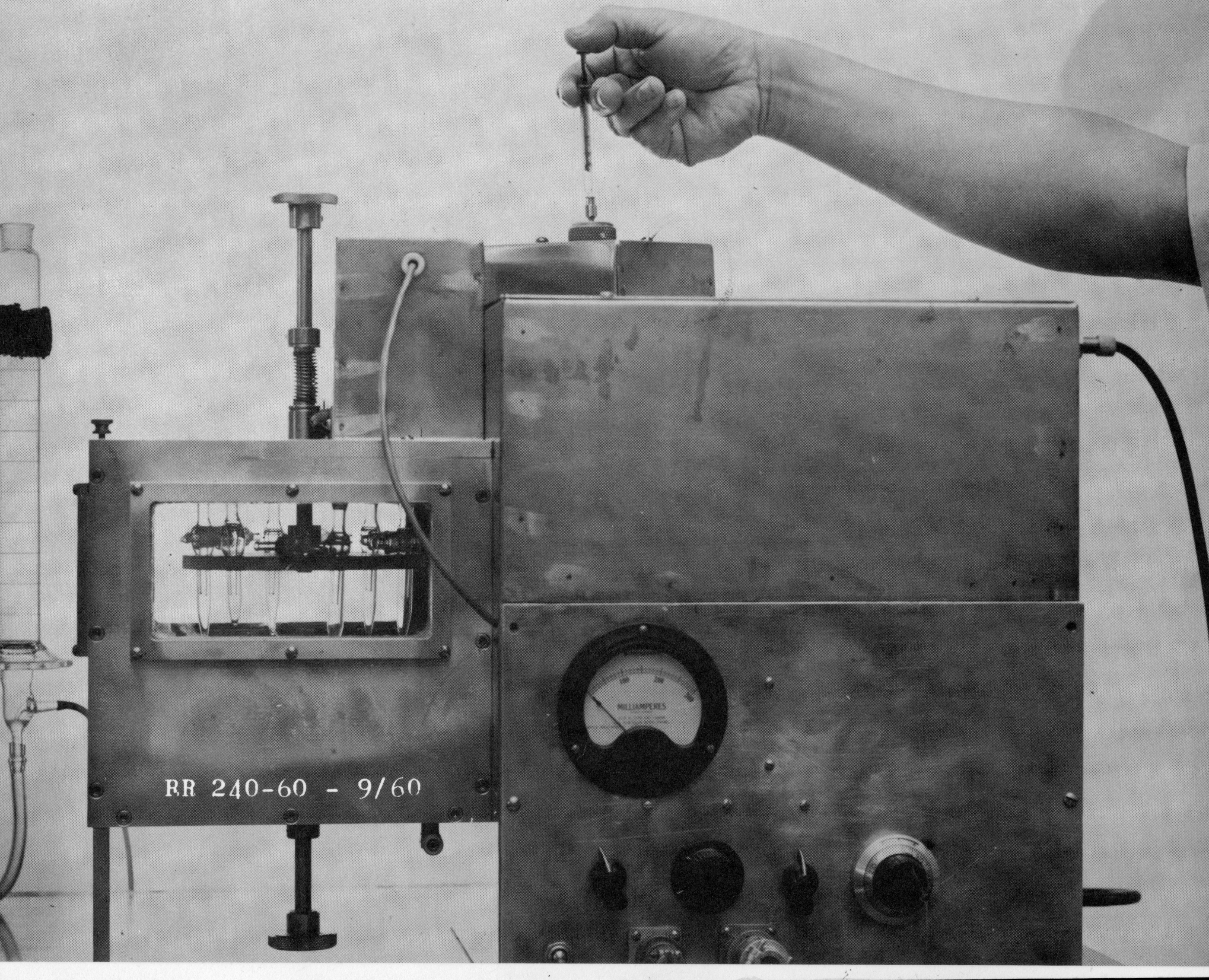
Analytical Techniques from the WRRC
The introduction of commercial GC instruments in the mid-1950s coincided with an avalanche of new analytical tools and techniques. The WRRC quickly emerged as one of the leading laboratories for flavor analysis in the world, with various new methods to evaluate flavors developed in succeeding years at the WRRC.
Static Headspace Analysis
In 1961, Ron Buttery (b. 1930) and Roy Teranishi (1922–2000) developed a method for analyzing aroma compounds called static headspace analysis. In this method, a sample of the vapor above a food, rather than the food itself, is analyzed by a gas chromatograph. This method has proven useful in the food industry for the detection of rancidity and off-flavors, and also has been applied in non-flavor applications such as detection of impurities in pharmaceuticals and forensic measures of blood alcohol levels.
Combined Temperature Programmed Capillary GC—MS
In 1963 William H. McFadden (b. 1927) and Teranishi were the first to describe the feasibility and advantages of combined temperature programmed capillary gas chromatography—mass spectrometry (GC-MS) for the analysis of complex mixtures. This process utilized the advantages of newly developed GC-MS systems, which were able to separate the samples using gas chromatography and then analyze the component compounds using mass spectrometry. The method made possible the identification of volatile chemical compounds within complex mixtures such as those found in foods. Through this work, WRRC researchers were able to identify key aroma components of oranges (α- and β-sinensal), rice (2-acetyl-1-pyrroline), bell pepper (2-isobutyl-3-methoxypyrazine) and many other foods.
Odor Thresholds
Led by Dante Guadagni (1920–2010) and Buttery in the 1960s, studies by WRRC researchers helped establish the role of odor thresholds in flavor chemistry. Whereas earlier studies focused mainly on identifying flavor constituents, the development of odor thresholds focused on their sensory importance. Odor thresholds provide a means for scientists to quantify the sensory impact of aromas. They measure the concentration at which the compound is detectable, describe the potency of aroma compounds and provide additional information about the relative importance of individual compounds in the flavor of foods.
Impact of WRRC Flavor Chemistry Research
The rapid increase in knowledge of flavor science beginning in the 1940s was powered by advances in chemical analysis. The WRRC was at the forefront in this area, developing instruments and methods that gave scientists newfound insight into the complex chemistry of flavor. Through these advances, WRRC researchers improved the taste of processed foods and introduced methods to monitor the safety of food supplies. Their pioneering achievements enabled the expansion of agricultural markets through the application of science, resulting in substantial benefits for farmers, food producers and consumers throughout the U.S.
Further Reading
- Cited for More Than 60 Years of Flavor Research (USDA ARS Western Regional Research Center)
- Keene P. Dimick biography (Chemical Heritage Foundation)
- Walter Jennings biography (Chemical Heritage Foundation)
Understanding the mechanism by which flavor compounds are formed can lead to better methods of food processing for better formation and retention of flavor.”
— Ron Buttery, Western Regional Research Center scientist
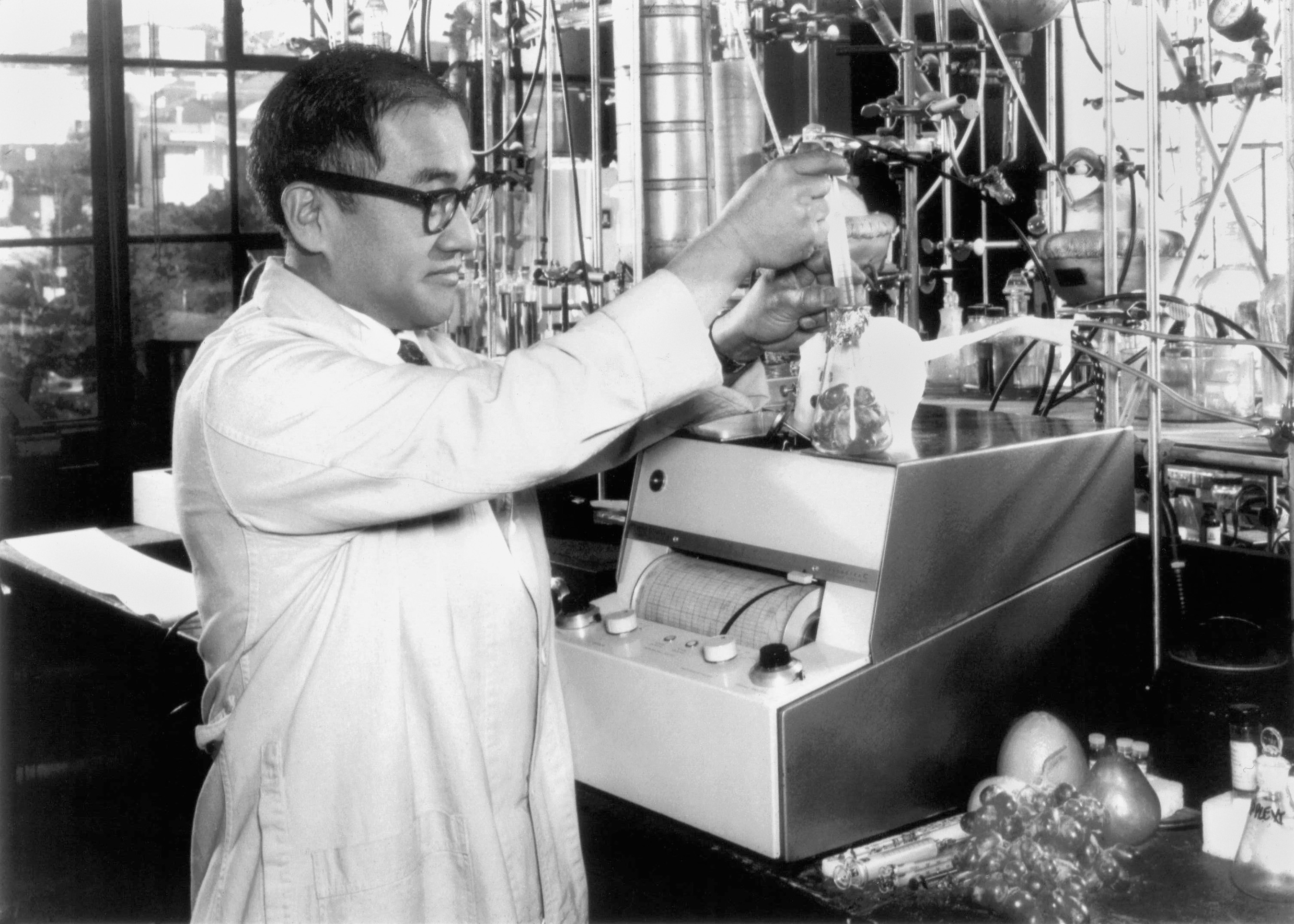
Landmark Designation and Acknowledgments
Landmark Designation
The American Chemical Society designated the flavor chemistry research of the U.S. Department of Agriculture, Agricultural Research Service, Western Regional Research Center as a National Historic Chemical Landmark at a ceremony in Albany, California, on August 29, 2013. The commemorative plaque reads
Since the 1940s, researchers at the Western Regional Research Center (WRRC) have worked to establish the scientific understanding of the chemical essence of flavor. WRRC scientists developed methods for analyzing the trace amounts of organic chemical compounds found in foods that produce taste and aroma. This triggered new capabilities in analytical chemistry that revolutionized the field of flavor chemistry and contributed important advances in analytical instrumentation. These and other achievements by WRRC scientists resulted in improvements to processed foods and development of state-of-the-art measures to monitor food quality, establishing the WRRC as a leader in the field of flavor science.
Acknowledgments
Adapted for the internet from “Flavor Chemistry Research, USDA ARS Western Regional Research Center,” produced by the National Historic Chemical Landmarks program of the American Chemical Society in 2013.
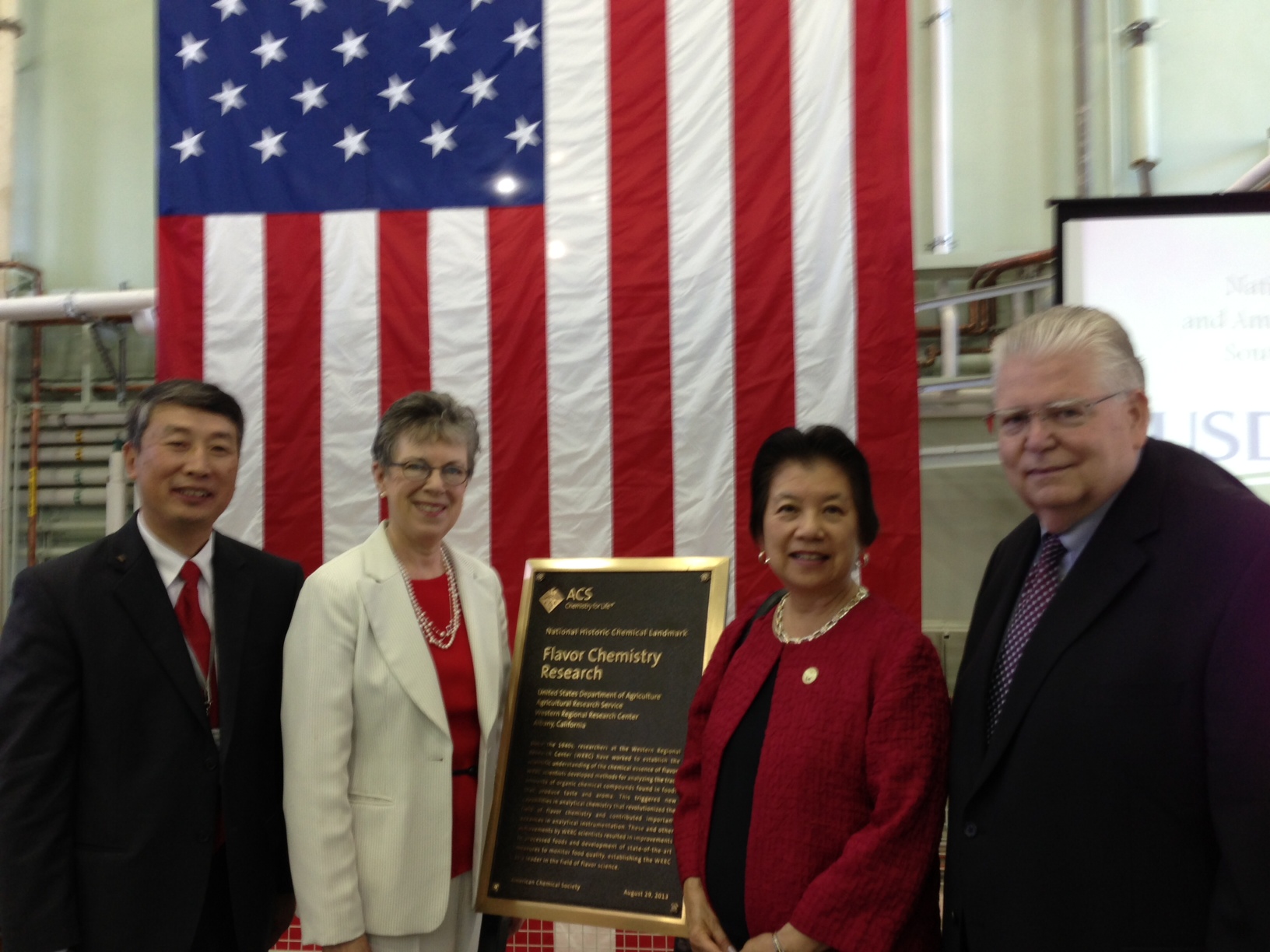
Learn more: About the Landmarks Program
Take action: Nominate a Landmark and Contact the NHCL Coordinator

